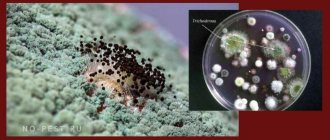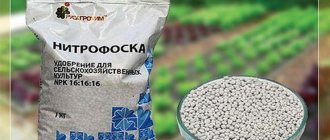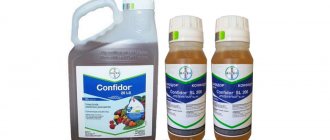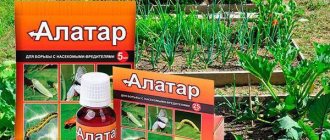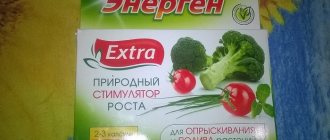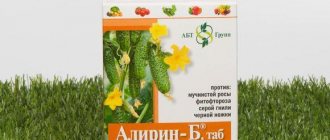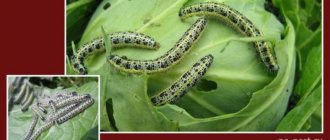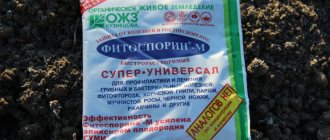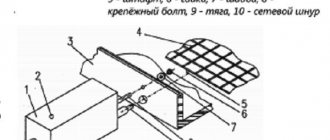Composition and properties of Fertika
Flower growers fell in love with this product for its rich composition, which is represented by various macro- and microelements. It contains:
- nitrogen;
- sulfur;
- calcium;
- magnesium;
- manganese;
- honey;
- molybdenum;
- iron;
- boron;
- zinc.
The main advantage of this fertilizer is the absence of chlorine. Fertika has a beneficial effect on flowers, saturates them with useful elements, strengthens the immune system, and stimulates the development of green mass and buds.
Features of the universal drug
Gardeners achieve positive results even with the minimum dosage of Fertika Lux - 1 tsp. for 5 liters of water. According to reviews, an increase in ovaries was recorded on fruit crops after applying universal fertilizer. The fruits ripen faster. In flowering plants, the buds become brighter and larger. Specialized flower Fertika improves the condition of flower beds and greenhouses - after several procedures, even the most modest inhabitants of the garden or window sill will bloom.
Fertika Lux contains:
- Phosphorus - 20%. Ensures the development of the root system. Affects its ability to absorb other beneficial substances.
- Nitrogen - 10%. Gives an increase in greenery and young shoots. Affects the intensity of photosynthesis.
- Potassium - 20%. Provides full flowering of any crops.
- A set of microelements with a wide spectrum of action. Including the rare mineral selenium, it adds sweetness to fruits and vegetables.
The dissolved fertilizer reaches the crops through regular irrigation. It is important to use the drug not once, but within the framework of a course defined by the objectives. Dry powder is less commonly used:
- when preparing the substrate for seedlings;
- when digging up a site in the fall.
The “dry” method of fertilizing is considered incomplete without regular, moderate watering of plants. It is important to ensure that they gradually absorb nutrients evenly. To save expensive powder, farmers recommend applying part of the fertilizers using the foliar method - spraying the leaves.
When is the use of liquid fertilizer for flowers indicated?
Flower growers are recommended to use fertilizer in liquid form if they want to get immediate results. Due to its consistency, the product is quickly absorbed into the soil, saturating the flowers with useful substances and eliminating problems with them quickly and effectively.
When using solid fertilizers, nitrogen losses are 80%, and liquid ones - only 20%.
Fertika is a high-quality fertilizer containing a large range of useful substances
Preparation for evergreens and conifers
There are several other special Fertika fertilizers. Of greatest interest are varieties such as, for example, the product “Fertika coniferous” for evergreens, produced separately for fertilization in spring and summer. This drug allows you to increase the acidity of the soil to an acceptable pH and support coniferous trees. Fertilizer is also recommended for other plants that prefer acidic soil, such as azaleas, garden and wild blueberries, rhododendrons and others. In the spring, the drug is applied exclusively superficially, covering the fertilizer during loosening. In summer, plants are watered with diluted Fertika.
Fertilizer, reviews of which are as positive as other types, has gained great popularity among landscape designers due to its properties.
Types and their features
The manufacturer took care of the interests of its consumers and developed several types of fertilizers:
- Water soluble. The nutrient solution can be used in professional drip irrigation systems. The granules completely dissolve in water, so they do not clog pipes.
- Liquid. The company offers a large selection of fertilizers that are designed for each type of flower, taking into account their individual needs and preferences. There are also universal complexes that allow you to cover a maximum of plants at a time.
- Monodoses . One capsule contains a sufficient amount of substance that needs to be poured into the pot without first diluting it in water. This is quite convenient for people whose flower garden is limited to a very meager number of plants.
- Granular. They are added directly to the soil when planting a plant. Typically used when working with horticultural crops.
The variety of fertilizers can confuse a novice gardener, but each type of fertilizer has its own purpose. The correct choice of product gives the maximum effect from its use.
Fertilizer for root crops
In our country, growing potatoes, which are considered the second bread for Russians, is especially popular among gardeners. The Fertika for Potato fertilizer will help you achieve a good harvest of this root crop. The drug will help increase plant productivity, speed up the ripening time of root crops and improve their quality.
The composition of this type of preparation is optimized for the nutritional characteristics of potatoes. This approach allows you to get a particularly effective result when using the Fertika product. Fertilizer, about which gardeners have more than enthusiastic reviews, is applied for the first time when planting potatoes, and subsequent times during hilling. The granules are embedded in moist soil, where they themselves will dissolve under the influence of rain.
Instructions for using Fertik fertilizer
Improper handling of mineral fertilizer can cause harm to the plant. Therefore, before using any fertilizer, you should carefully read the recommendations that the manufacturer puts on the label when labeling.
Indications and best time for treatment
Flower growers know that some plants are very capricious and require careful care. If the leaves begin to turn pale and fall off, and the buds become small, then a nutrient solution should be added.
Fertika is also used to restore the strength of a plant after hibernation, during the period of active budding or after a protracted illness. Many gardeners apply fertilizer as a preventative measure on a weekly basis.
Experienced flower growers and gardeners recommend working with fertilizer in the evening or in cloudy weather so that the sun's rays do not disturb the plant. You can fertilize indoor flowers at any time, the main thing is to move them to partial shade for a while.
How to cook
The packaging contains individual dosages that are recommended for each specific case. On average, use 1 tbsp. l of product per 10 liters of water.
Experts recommend pouring the granules into a separate plastic container, adding a little liquid and stirring until completely dissolved. Then dilute the concentrate with the remaining amount of water, pour it into a watering can and apply the nutrient mixture under the root of the plant.
Security measures
The manufacturer positions Fertika as a drug that is safe for humans and the environment. However, experienced gardeners know that they should not give up basic safety measures. Since the fertilizer is applied at the root, a respirator, goggles and a protective suit do not need to be used. But it’s better not to give up gloves, since getting the mineral solution on unprotected skin is undesirable. If an allergic reaction occurs after working with the nutrient mixture, you should immediately take an antihistamine and consult a doctor if you feel worse.
Fertika Autumn
Fertika Autumn NPK 5:21:31 + micro - complex mineral fertilizer for feeding all types of plants in late summer and autumn.
Preparative form – granules.
Packaging – plastic bags of 1, 2.5, 5, 10 and 25 kg.
Advantages of the drug:
- the same composition of nutrients in each granule;
- prolonged action;
- stimulates the formation of fruit buds;
- helps improve the ripening of wood shoots;
- increases winter hardiness of plants.
Features of using water-soluble fertilizer Fertika Lux
Fine crystalline nutrient that is completely soluble in water. It goes well with all indoor plants, vegetables, flowers and is even suitable for seedlings. In its composition you can find all the macro- and microelements necessary for the normal development of plants.
Flower growers are advised to use fertilizer in liquid form if they want immediate results.
For vegetables
Summer residents closely monitor the condition of their garden, since the future harvest depends on the health of the plant. To support the immunity of various crops grown in greenhouses, you should take 1 tbsp. l. dilute the nutrient in a bucket of water (10 l). The procedure is carried out no more than once a week, so as not to cause oversaturation with useful components. If plants are cultivated in open ground, then experts recommend applying a nutrient solution once every two weeks. To do this, dilute 1 tbsp in 10 liters of water. l of the product and water the area with the resulting solution.
For flowers
Household and garden flowers require no less care than garden crops. Many plants have difficulty breaking dormancy, some are susceptible to diseases and pests, while others simply do not have enough nutrients for normal flowering and development.
In order for the flowers to gain strength and delight with full buds, add a special solution (1 tablespoon per 10 liters of water) with each watering in the summer, as well as every third or fourth time in the winter. The main thing is not to overdo it, because in this case, plants, especially those that are dormant, may react negatively to feeding. Experts recommend refraining from fertilizing freshly transplanted flowers, especially if the fresh substrate is rich in nutrients.
For seedlings
Young seedlings are especially demanding on nutrition because they are at the stage of active growth. To keep the seedlings healthy and developing well, gardeners should add a nutrient mixture weekly (1 tbsp per 20 liters of water).
The main thing is to water the plants strictly at the roots, so as not to cause fungal diseases on the leaves due to high humidity.
Fertilizer characteristics
The drug "Fertika" looks like a powdery crystalline substance with granules of different colors. The composition includes the main components required for the growth and development of the plant. In addition to the essential substances - sodium, potassium and nitrogen, you can find iron, manganese, zinc and other trace elements here. This composition activates the process of bud formation and fruit set, increases the flowering period and improves the color of flowers, making it brighter and more saturated.
But the main thing is that the preparation does not contain chlorine and its components, which are extremely harmful to plants.
The fertilizer is sold in small packages of 20 and 100 g, which is quite convenient for use at home and in the garden. At the same time, the consumption of the drug is economical in comparison with other fertilizers.

